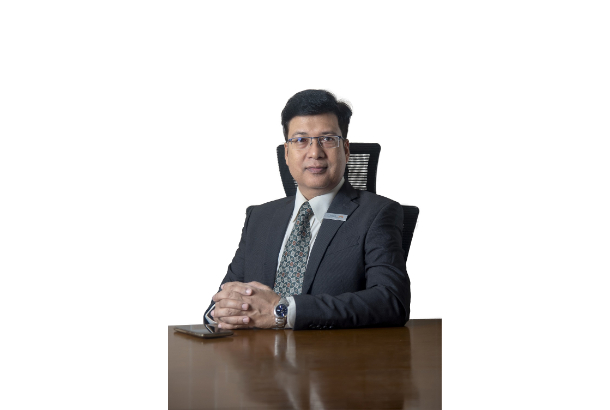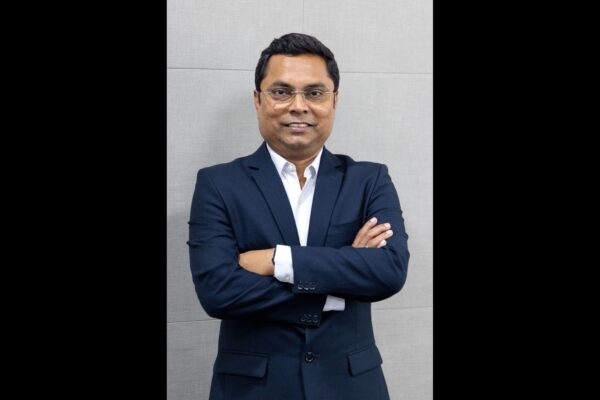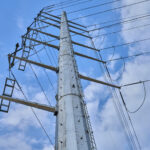We are also very bullish on renewables, says Kalyan Kumar Bhattacherjee, Chief Sustainability Officer, Jindal Stainless
We are investing in the upgradation and optimisation of our processes, aiming to reduce energy consumption and emissions
What sustainability measures are you implementing in the stainless steel manufacturing process? Have you started replacing coal with alternative raw materials such as municipal waste or agricultural residues?
Jindal Stainless is deeply dedicated to sustainability, embracing a comprehensive approach that involves meticulous evaluation of our emissions and identifying effective strategies for reducing them. Our focus on efficiency maximisation, renewables, circular economy, fuel substitution, and process modification demonstrates our dedication to long-term sustainability. Our proactive approach to efficiency improvements is a testament to our commitment to operational excellence. We are investing in the upgradation and optimisation of our processes, aiming to reduce energy consumption and emissions. This includes all plant machinery, from large furnaces to small motors or pumps, under the ambit of efficiency improvement. We are also very bullish on renewables and see it as the future of our energy needs as a responsible and sustainable stainless steel manufacturer. We are reliant on solar panels for energy in our manufacturing plants, including an installed 7.3 MWp (floating solar panels) at Jajpur and 6.54 MWp (Rooftop solar panels) at Hisar. We are in the process of commissioning a large rooftop solar plant at Jajpur with a capacity of about 23MWp. Additionally, we are currently in the process of securing round-the-clock renewable energy for both our manufacturing facilities. To achieve this, we have entered into Memorandums of Understanding (MoUs) with prominent developers to set up captive Wind-Solar hybrid renewable facilities that supply 300MW round-the-clock renewable energy. We are sharply focused on recycling raw materials to manufacture stainless steel. By increasing the proportion of recycled material in our feedmix, we are reducing our reliance on resource consumption and improving the impact of climate change on our operations. Currently, we recycle 72% of our input materials and continuously strive to increase this fraction, demonstrating our unwavering commitment to ongoing sustainability improvements and a secure future.
As part of our decarbonisation objective, we're not just following trends, we're setting them. We're actively exploring fuel substitution, assessing a range of alternatives from natural gas to biomass to green hydrogen. In fact, we're proud to be one of the first in the steel industry to establish a green hydrogen plant for hydrogen consumption in our processes. When we talk specifically about the substitution of coal and coke, we have trialled substitution with different biomass. Municipal waste cannot be used directly in the steel industry, but it has found significant use in the cement industry. Likewise, we have trialled the usage of agricultural residue in our processes. We have injected biomass such as rice husks and biomass pellets into our captive power plant for power generation. Moreover, we have also successfully tested palm-based biomass for injection into our electric arc furnace to replace coke injection, which is a process requirement. We are currently exploring ways to establish a supply chain to furnish the biomass for consumption.
Your take on a waste heat recovery system as a sustainability tool and your organisation’s initiatives on this front?
For energy-intensive industries like stainless steel manufacturing, heat recovery is extremely essential as a sustainability tool. The large amount of electrical and chemical energy consumed in the steel industry results in extremely high temperatures and several process steps. If not captured, this heat is easily lost to the environment, which could have otherwise been put to good use. This lost heat has to be covered by the consumption of additional fuel and energy. Through the use of heat recovery systems in hotspots, the heat generated is captured and utilised – either to generate power or to generate steam for process use. This allows significant opportunities to reduce costs and associated emissions.
At Jindal Stainless, waste heat recovery is an integral part of our strategy toward emission reduction. We have a waste heat recovery unit at our Ferro Alloy plant, which captures the waste heat from the effluent gasses of the submerged arc furnace and converts it to steam with an installed capacity of 57 tons per hour of steam flow output. This steam is then utilised in our downstream processes. We also have several other smaller waste heat recovery units across our value chain.
Carbon Capture, Utilization and Storage (CCUS) has emerged as an indispensable technology for the stainless steel sector. How has the installation of this technology benefited in reducing CO2 emissions?
It is true that for hard to abate industrial sectors like steel, where there is no proven technology for achieving complete decarbonisation, CCUS remains at the forefront of options for deep decarbonisation. There are several pilot-scale and a few larger-scale installations across the world. However, CCUS remains prohibitively expensive for large-scale adoption in the industry. Several factors further limit CCUS’ adoption, such as, in the Indian context, limited sequestration sites, high energy costs, low CO2 waste streams, etc. There are still some ways to go for CCUS to mature as a proven decarbonisation alternative for the industry. While technology has matured to a substantial extent, cost feasibility still remains far off. With a policy nudge and a cost to carbon CCUS may still become feasible in the future.
The logistics from the manufacturing plants to the dealers’ warehouse release greenhouse gas emissions. What steps have you taken in your logistics and supply chain to minimise these emissions?
Logistics is a significant contributor to global emissions, contributing around 7% of overall global emissions. Thus, it is mandatory for industry to reduce emissions from its supply chain, both upstream and downstream transportation. We at Jindal Stainless are focused on reducing the carbon footprint of our supply chain. We ensure modal prioritisation of shipments by maximising sea and rail transportation to reduce emissions. We maximise efficiency through route optimisation and optimal loading. We have also internally piloted shifting to EVs to reduce our reliance on fossil fuels for our supply chain, with electric forklifts and passenger vehicles deployed at our manufacturing sites. We are also exploring EV trucks for hauling heavier cargo with a reduced environmental footprint.









